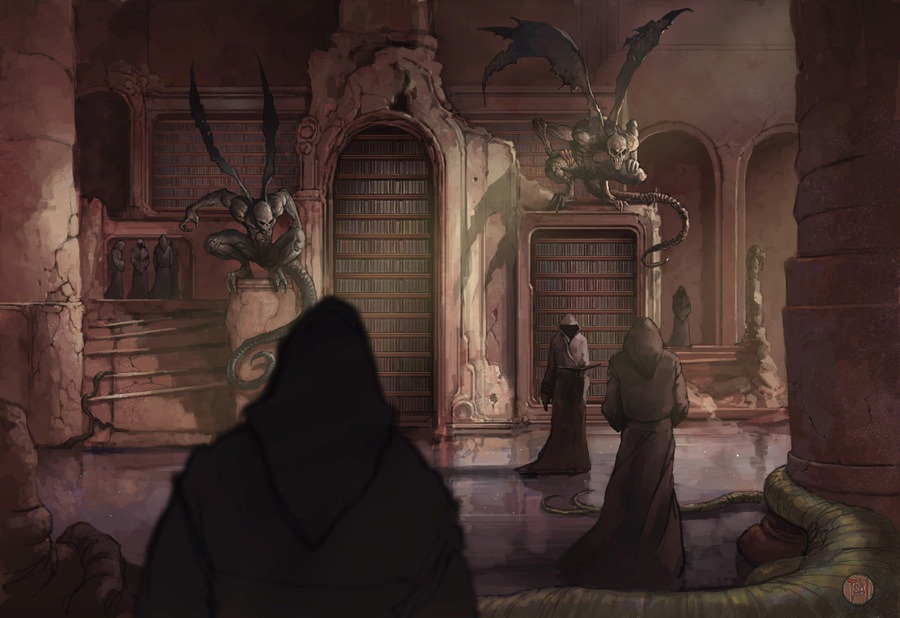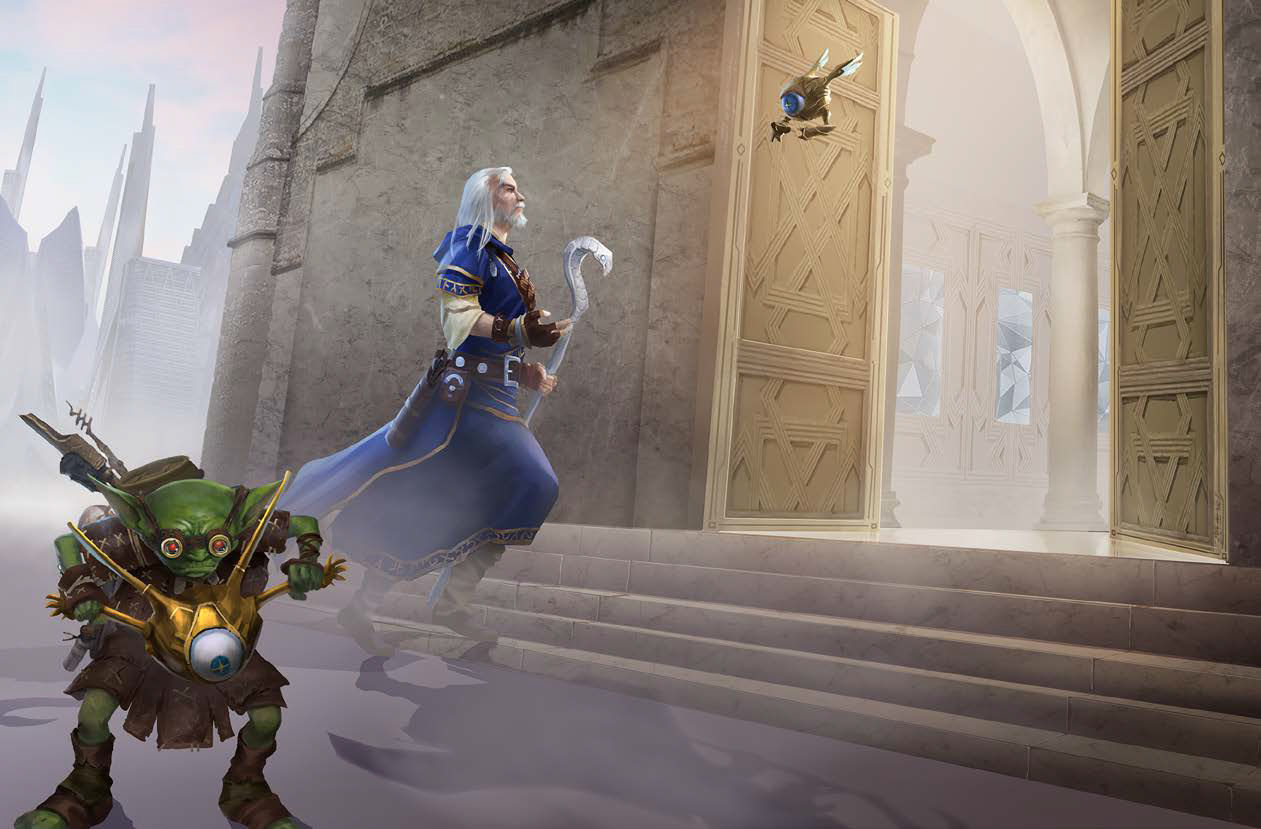In the last article, we established the basis for a campaign guide designed to get your players and their characters more immersed into the lore of Golarion. We have the starting location: the village of Anactoria in southern Ustalav. We have a custom background and a list of appropriate backgrounds for characters, who are assumed to be locals. This time, we’ll get to the heart of the matter: PC knowledge.
Side trek ramble: back in the “old days” before Pathfinder, most fantasy RPG characters didn’t have Knowledge skills: they had their class abilities and that was about it. Only theives could open locks (or even climb walls!), only rangers could track, and so on. Instead of Knowledge skills, the GM would provide “rumors” to seed future adventures or provide players hints as to what was going on. Back in those days, I started providing each player with a sheet of personalized knowledge based on their character’s backstory. A local might know a bit about which NPCs were trustworthy, an elf might know a bit about what was in the nearby forest, and so on. With the advent of Knowledge skills, the impetus was passed to the PCs to drive their discovery of knowledge. This was a good move, since it allows the players to play and not just receive what the GM gives them. On the other hand, unless a *player* knows what questions to ask, their *character* might miss some crucial bits of knowledge that they should have had.
There are a couple of ways to handle this. Both technically break the “rules” in some ways, but in such minor ways that I’ve never had issues with using them, even in a rules-rigid system like Pathfinder Society organized play.
Method One: Player Knowledge = Character Knowledge
My favorite way is to encourage players to use whatever knowledge they have, and treat it as in-character knowledge. When they see a troll, their character can know that it takes fire or acid to overcome the regeneration, even if their character doesn’t make a successful Society check. (Which, come to think, seems like an odd skill to use, but them’s the rules.) They can even know campaign setting lore about trolls, like the fact that the troll augurs of Kaer Maga make use of their regeneration to spill their own entrails and read fortunes from them like tea leaves.
Granted, you have to be careful about this, because there will be the odd player who will game this system. I don’t let players with low mental scores and no knowledge skills overuse this. You can wind up with the old “synthesist summoner” issue, where the PC puts their whole point buy into mental skills because they got the physical skills for free.
So why would you do this? One word: engagement. It rewards characters whose players put in the time to learn about the campaign setting. If you have committed the entire contents of “Trolls of Golarion”¹ to memory, that means you’re invested in the campaign, and your character sees some in-game benefit from that.
I’ve had some great exchanges where a player who has a lot of knowledge weaves it into their successful Knowledge roll, and it saves me from having to provide the same information. If the supposedly-smart character actually says the things that they know, it increases immersion rather than having the GM tell the group, or having the player repeat it afterwards.
This idea of letting the knowledgeable character reveal the knowledge leads us to the second method of incorporating more lore. It takes quite a bit more prep on the GM’s part, but also leads to a campaign where characters really feel like a part of the world they are exploring.
Method Two: Customized Campaign Guide
Paizo’s Player’s Guides for their adventure path line have set the bar in terms of providing players with the basics of their upcoming campaign. Customized backgrounds, summaries of the home town and the local area, and suggestions on which class and ancestry combinations will work well are exactly what all the players need before beginning. Unfortunately, these guides often go by the wayside because they have to be spoiler-free and so can’t refer to later events or discoveries.
But what if each player had their own “player’s guide” that contained not only the basics, but also additional campaign-specific information based on their character’s background, class, ancestry, and skill choices?
“That sounds like a lot of work!” you are saying. And yes, it is… but it’s amazingly fun work. It’s the GM’s equivalent of making new characters over and over just for fun – except in this case the material is likely to get used because you’re putting it into the guide for a reason.
And this doesn’t have to involve a lot of writing if you don’t want it to. I played in a Carrion Crown game where my GM pointed me to specific pages of setting guides to read as personalized background, while telling me to avoid certain sections for spoilers. (Yes, this involves trust between players and GMs. All good games do.) You could also reference PathfinderWiki or other fan-created content online, or even cut-and-paste into a document if you really want to avoid the temptation for spoilers.
For our aforementioned campaign starting out in the village of Anactoria, I’d provide all of the material developed in the last article to every player, perhaps editing or adding to it for each individual. I’d then go through the Ustalav sourcebook, Rule of Fear”, and pull out any items that seemed appropriate to each character’s background. I’d also make up a bunch of stuff that didn’t relate to the planned campaign at all – some of these would be red herrings, while some could be side treks or just random bits of information. You don’t want to telegraph the big bad of Book 6 at the beginning by being the only person noted in the campaign guide!
In this method, players still make knowledge checks to learn things, but they get to know the material in their specific player’s guide for free. They choose when (or if) they reveal it to their own players, and they control the narrative. They may flesh out the material, they may embellish or exaggerate, they may lie. It’s up to them. As GM, you will determine whether what they reveal is “true” or just misinformation – although if you’re trying to engage the players in s shared world, I suggest going with anything they come up with unless it contradicts existing plans for the campaign. (Don’t let them determine “the big bad pretends to be a lich but is actually just a doppelganger using prestidigitation!” unless you want that to be the case.)
This method also requires trust between GM and players, and a willingness to release some control to the players about helping to craft the details of the shared story. It’s totally worth it. When you have players designing content for you, your GMing job gets easier, and everyone has more buy-in.
(Plus: since I know many GMs spend more time prepping than being able to run a campaign due to the ever-present scheduling issues… you can add to this as you go. I’ve even recycled content from a failed-start campaign into the next iteration, using the old PCs as rumor-fodder in the new version.)
In the next article, I’ll share my completed campaign guide for “Adventures in Anactoria”, to provide specific examples of the sort of stuff I use.
¹A fictitious book, but maybe it shouldn’t be…






